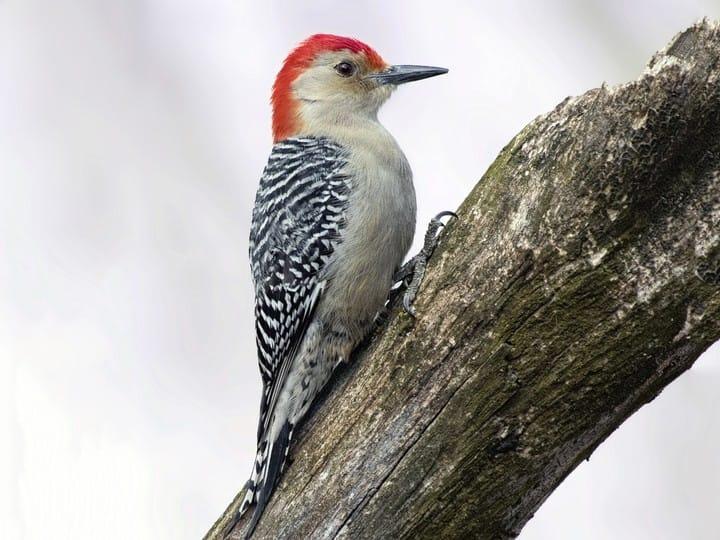Observing Woodpeckers in Florida: Species Diversity and Distribution
Observing Woodpeckers in Florida: Species Diversity and Distribution
Blog Article
Discover the Fascinating World of Woodpeckers: Every Little Thing You Required to Know
The world of woodpeckers is a realm loaded with distinct habits, detailed adaptations, and a varied selection of species. From their environments and circulation patterns to their feeding routines and specialized anatomical attributes, woodpeckers have actually long captivated the passion of ornithologists and nature enthusiasts alike. Recognizing the ins and outs of these remarkable birds provides a glance into the intricate interaction in between their biology and the setting. As we check out the world of woodpeckers better, we uncover a riches of information that drops light on their value in ecosystems and the challenges they face in an ever-changing world.
Woodpecker Habitats and Circulation
In North America, for example, woodpeckers can be found in both coniferous and deciduous forests, using their strong beaks to forage for pests and develop nesting tooth cavities in trees. In Africa, certain woodpecker varieties have actually adjusted to arid atmospheres, such as the acacia timberlands, where they play a crucial function in regulating insect populaces.

Feeding Behaviors and Diet Plan
Woodpeckers use their strong beaks to pierce right into the bark of trees, probing for pests and larvae hidden beneath the surface. In enhancement to bugs, woodpeckers also take in nuts, seeds, fruits, and sap.
Woodpeckers are understood for their drumming habits, which serves not just to connect with other woodpeckers however also to find food. The fast drumming audio is developed by the bird pecking on resonant surface areas like dead trees or metal posts. This habits can bring in insects hidden in the timber, enabling the woodpecker to find their visibility and feed upon them.
Unique Adjustments for Tree Climbing
In their adept search of insects concealed within tree bark, woodpeckers have developed exceptional physiological features that equip them with unique adjustments for reliable tree climbing. Woodpeckers have strong neck muscles and an Visit This Link one-of-a-kind head structure that take in the effect of constant pecking, enabling them to climb up vertically without triggering damage to their brains. These adaptations display the amazing evolutionary layout that makes it possible for woodpeckers to navigate trees with click for more info precision and efficiency.
Diverse Woodpecker Species Worldwide
With over 200 different varieties spread across numerous habitats worldwide, the family members of Picidae incorporates a remarkable variety of woodpeckers. These birds can be found in woodlands, timberlands, savannas, and even urban areas, showcasing their flexibility to various settings. From the iconic Northern Flicker in The United States And Canada to the vivid and evasive Crimson-backed Flameback in Asia, each woodpecker varieties displays special qualities in terms of plumage, behavior, and environment preference.
Woodpeckers vary considerably in dimension, with the petite Downy Woodpecker blog measuring around 6-7 inches in size, while the powerful Lineated Woodpecker can get to up to 17 inches - Woodpeckers in Florida. Their beaks also are available in different forms and dimensions, reflecting their feeding practices. Some species focus on extracting pests from tree bark, like the Acorn Woodpecker, while others, such as the Black-cheeked Woodpecker, feed on fruits and seeds

Preservation Efforts and Obstacles
Conservation efforts for woodpecker populations are essential in alleviating the effect of habitat loss and other hazards dealing with these varied bird species. Woodpeckers face different obstacles to their survival, mostly as a result of deforestation, urbanization, environment adjustment, and intrusive species. To address these concerns, preservation efforts concentrate on safeguarding and restoring woodpecker environments, executing sustainable forestry practices, and elevating recognition regarding the importance of these birds in ecosystems.
One substantial obstacle in woodpecker conservation is the fragmentation of their habitats, resulting in separated populations that are more at risk to extinction - Woodpeckers in Florida. Preservationists work to produce wild animals hallways and safeguarded areas that attach these fragmented environments, allowing woodpeckers to relocate in between different areas for feeding, reproducing, and sanctuary

Conclusion
In verdict, woodpeckers are interesting birds with one-of-a-kind adaptations for tree climbing and feeding habits. More study and conservation actions are required to guarantee the survival of woodpeckers in the wild.
Report this page